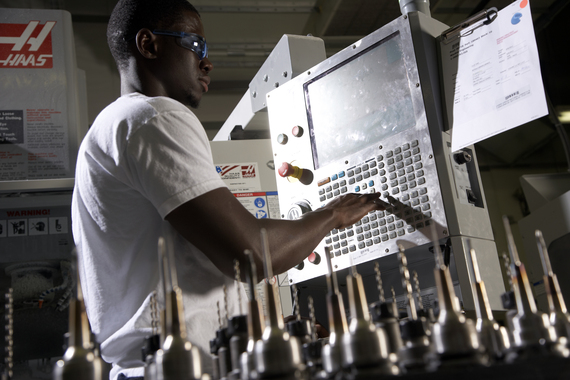It's no secret that robotics help manufacturers drive efficiency, productivity and quality, particularly for large volume operations. In fact, in the past year and according to the International Federation of Robotics (IFR), "robot installations in the United States - the third largest robot market - continued to increase by 11 percent to the peak of 26,200 units."
As the demand for new products and innovation grows, coupled with the need for more rapid go-to-market strategies, automation in manufacturing is gaining prominence as a major driver for business success. On the other hand, the country as a whole is continuing to look for ways to strengthen our economy and to keep manufacturing jobs on-shore. All that is to say that robotics and automation will continue to impact American manufacturing, so it's no surprise to see recent conversations about whether robots would replace jobs.
As one of the world's fastest digital manufacturing sources for custom prototypes and low-volume production parts, we believe there is strong case behind the demand for automation in manufacturing. But we also believe there is a continued need for human interaction when it comes to these new technologies, and it is creating opportunities for a new skillset to enter the workforce.
In the manufacturing industry - even where automation is already commonplace - new roles have been created to analyze manufacturing process data and to identify areas for continuous improvement in quality, efficiency and productivity. As the technology for these automated processes continues to expand, a skilled workforce of designers, analysts and engineers is needed to implement these improvements as they are developed. As we have seen internally, the company growth that comes with improved efficiency and productivity has led to an increase in jobs, adding more talented employees to a growing manufacturing business.
Digital manufacturing and prototyping companies have been able to implement innovative new technologies while not only building their own workforce, but also helping create jobs in their client's respective industries by accelerating products to market faster; developing a need for more skilled roles as these companies grow.
While the need for faster growth and more innovative solutions is pushing businesses to automate, it is still humans that are the driving force behind this need. Creating a strategy, implementing it, working toward a goal and meeting business objectives - and at the same time achieving the peak level of client satisfaction - is what drives our workforce toward success. So while automation and robotics have changed and improved the way we work, businesses must continue to focus on building strong human capital and cultivating the skills necessary to stay competitive in a new landscape.

